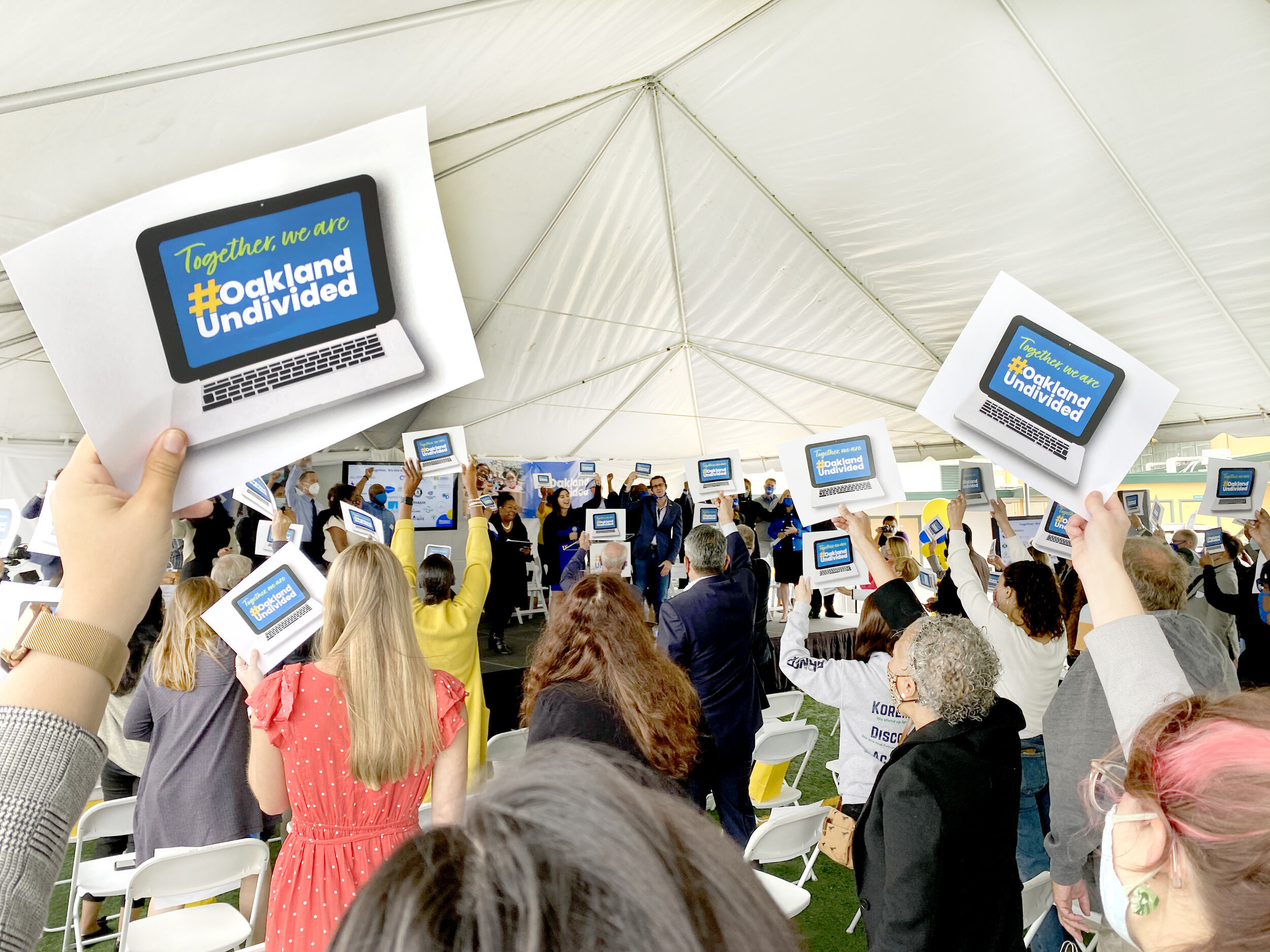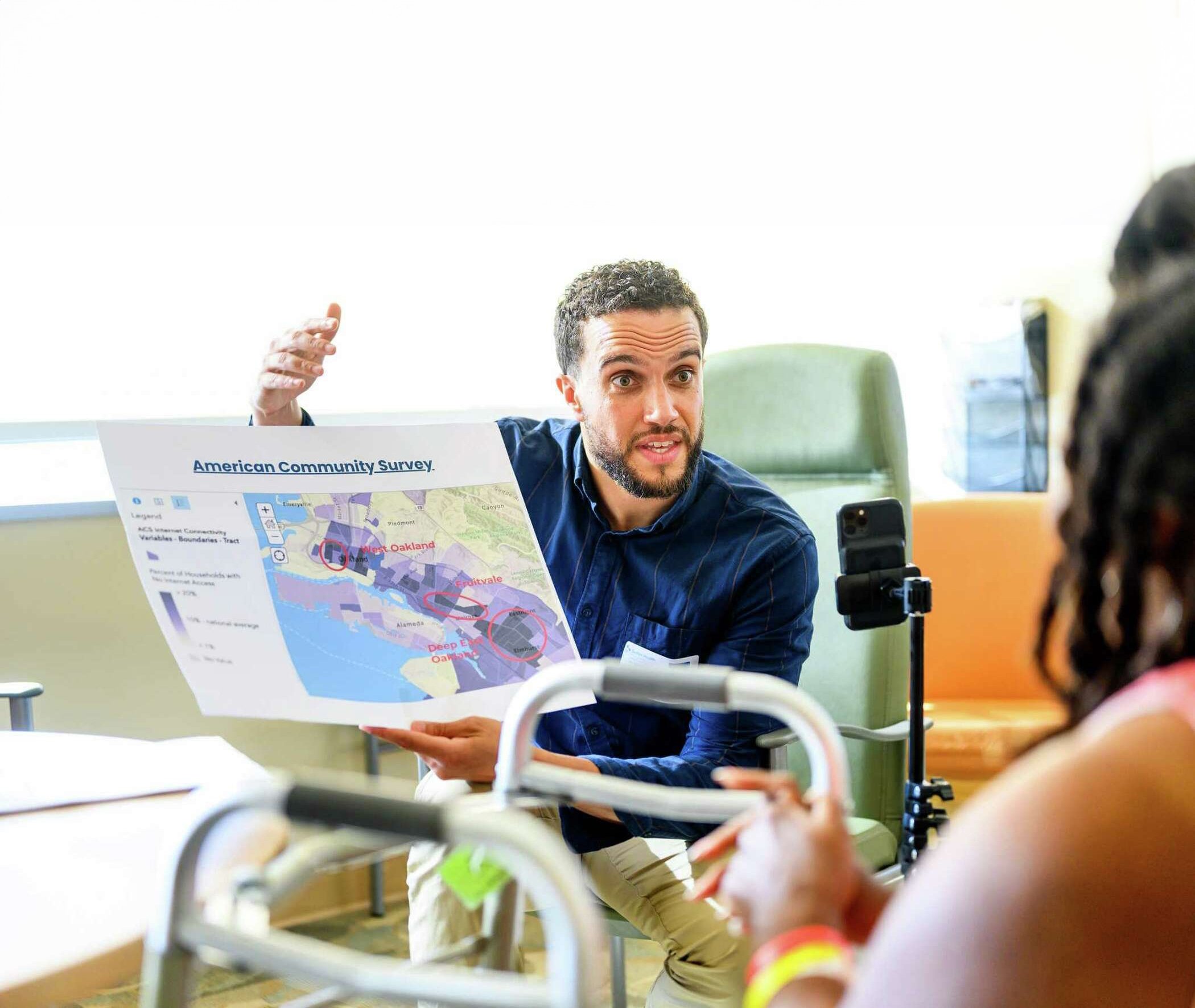Oakland Secures $15 Million Grant To Bring Broadband Into Underserved Neighborhoods
By Sean Gonsalves on Monday August 19, 2024
After two years enmeshed in the unglamorous work of coalition-building, speed test data collection, and pushing state leaders to invest in better telecommunication infrastructure across Oakland’s most disadvantaged neighborhoods, digital equity advocates in the East Bay city are finally seeing the fruits of their labor pay off.
The city was recently awarded a $15 million grant from the state’s $2 billion dollar Federal Funding Account, administered by the California Public Utilities Commission (CPUC).
The grant will fund the construction of a city-owned, open-access, hybrid middle mile/last mile fiber network – one of a half-dozen grant awards the CPUC approved in the first round of funding, most of which went to support community broadband initiatives.
Courtesy of federal Rescue Plan dollars, the infusion of cash will allow the city to deploy nearly 13 miles of new middle mile 144-count fiber, upgrade almost 12 miles of existing city-owned fiber, and add 9 miles of new last mile fiber connections. As the city’s network is built, it will be connected to the state’s new massive open access middle mile network now under construction.
The FFA grants are part of California’s larger Broadband For All initiative, a $6 billion effort aimed at seeding competition and expanding broadband access across the Golden State.
The Oakland project not only paves the way for the city to connect 14 community anchor institutions (CAIs) and nine public safety buildings, it will also expand high-speed Internet access to thousands of unserved and underserved addresses in West and East Oakland.
When the city got official word from the CPUC in July, Oakland Mayor Sheng Thao lauded the work of city officials and the cross-sector digital equity coalition #Oakland Undivided:
“I want to extend my heartfelt thanks to the CPUC for their investment in Oakland. I also want to recognize Tony Batalla, our Chief Information Officer, for his leadership and Patrick Messac from OaklandUndivided for his relentless commitment to bridging the digital divide.”
After the grant announcement, #OaklandUndivided Deputy Director Georgia Savage told ILSR it “speaks to the breadth of support and the people who have advocated for this: community leaders, city council, the San Francisco Foundation, OUSD (the Oakland Unified School District), so many different folks – those involved in ending poverty, those involved in education, people working across all different sectors.”
“We are elated that officials supported this,” she added, “but this was more than just our elected officials. This is a community who saw the need and worked on providing a solution.”
Affordable Housing With Free Internet Service
The city’s Broadband Manager Luisa Calumpong shared Savage’s enthusiasm and was also quick to note that the job wasn’t complete.
What lies ahead, she told ILSR, includes issuing an RFP for network engineering, design, and construction; with an eye towards building in redundancy to ensure maximum reliability.
What Calumpong most looks forward to, she said, is working with the Oakland Housing Authority (OHA) to deploy fiber to 27 different affordable housing developments across the city to support OHA’s “Free Internet Initiative” in partnership with Aervivo, a private provider who specializes in providing multi-dwelling-unit (MDU) properties with “fiber and/or wireless network” connectivity.
OHA is currently working to bring gigabit capable wireless service to four OHA developments (Palo Vista Gardens, Peralta Village, Lockwood Gardens, and Campbell Village). Now, with the construction of a city-owned last mile fiber network, it will allow OHA to expand free (for residents) Internet to the city’s numerous other affordable housing developments in the coming years.
Barring unforeseen delays, Calumpong said she anticipates construction of both the middle mile and last mile fiber network to be completed by the end of 2026.
Besides deploying fiber to the city’s affordable housing developments, which will provide high-speed Internet access to about 2,500 households, the network will also pass numerous businesses and single family homes, Calumpong noted – setting the table for the city to lease fiber to independent Internet service providers (ISPs) and bring choice and competition to a market dominated by the big incumbent providers (Comcast and AT&T).
The Power of Data
Unsurprisingly, objections to the city’s grant were filed by AT&T and Comcast during the application review process.
Although the CPUC resolution approving the grant didn’t name the providers who challenged the grant, the resolution noted that “multiple addresses provided by the providers are shown as being unable to receive fiber service according to the providers’ websites, and that many of the locations the providers objected to are outside the project area.”
“Staff also determined that the City of Oakland cannot viably serve all the unserved locations in the project area without serving the areas where the objectors provide competing services.”
The only change that was made to the application as a result of the objections, the resolution said, was that “the number of unserved locations has been revised” but “the total grant amount is unchanged.”
Those sorts of behind-the-scenes attempts from incumbent providers to stave off competition by conjuring up the industry’s favorite boogeyman (“overbuilding”) were turned away largely because of the painstaking work of #OaklandUndivided and the school district did to document gaps in stated coverage.
“We needed to illustrate that there was a need,” Savage said. “And that’s difficult to do for an urban area because usually it’s a (service) reliability issue. That’s why it’s important to get your own data and do things like community surveys and internal wiring inspections.”
“It’s how we were able to show, through multiple sources, that the ISPs who tried to challenge us were misrepresenting the reality on the ground,” she said.
Or as Calumpong put it: “if it wasn’t for OaklandUndivided and the Oakland School District compiling that data, we wouldn’t even be having this conversation.”
It’s an example of how important it is for digital equity advocates to grapple with the devil in the details, such as understanding that the spending rules for American Rescue Plan funds in building new broadband infrastructure are more flexible than the far more stringent spending rules under the forthcoming BEAD (Broadband Equity, Access, and Deployment) program enshrined in the infrastructure law.
Broadband projects funded with Rescue Plan dollars allow states and localities to take price and reliability of service into account when defining “unserved” and “underserved” locations; whereas BEAD more narrowly defines those areas strictly in terms of speed.
Hard Won Lessons Learned
Acutely aware that cities across the nation face similar connectivity challenges, Savage and Calumpong are eager to share insights that could prove useful to community leaders elsewhere.
Like a good referee in sports, when infrastructure is doing its job, most people won’t notice.
“When government actually works, you never have to think about it. So if we can provide needed backhaul and people don’t have to think about it, that’s good. For so many, the Internet is just there. And I want people to just have it, and not have to think about it, or have to advocate for it,” Calumpong said.
Adding to that, Savage noted how she has a deeper appreciation for the time it takes for community-led infrastructure projects to really take off and why it’s vital to be at the decision-making table before investment decisions are made.
“So many decisions are made before the grant process even opens,” she said. “That’s why it’s really important to get involved in the actual rulemaking process.”
As the CPUC continues to administer FFA grants (and forthcoming BEAD grants), Savage said she hoped it was a sign of more to come for other community broadband projects across the state.
“The selection of our project gives us hope this could be a trend – that community driven projects will be selected,” she said.
Header image and inline images courtesy of #OaklandUndivided





